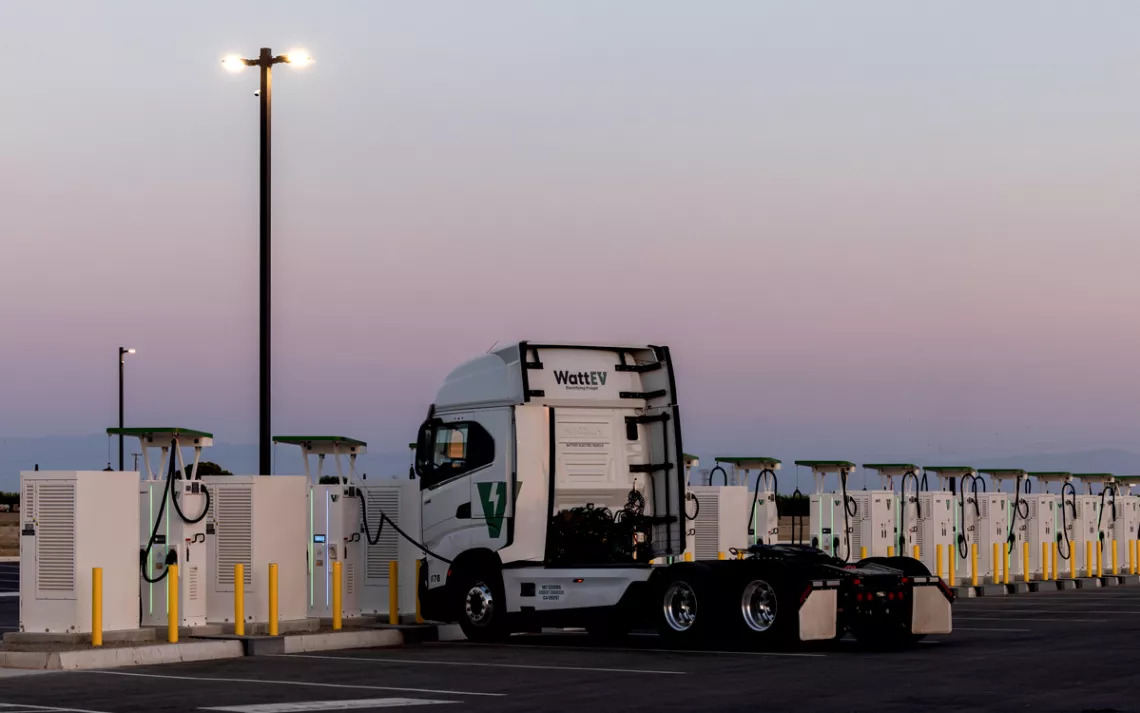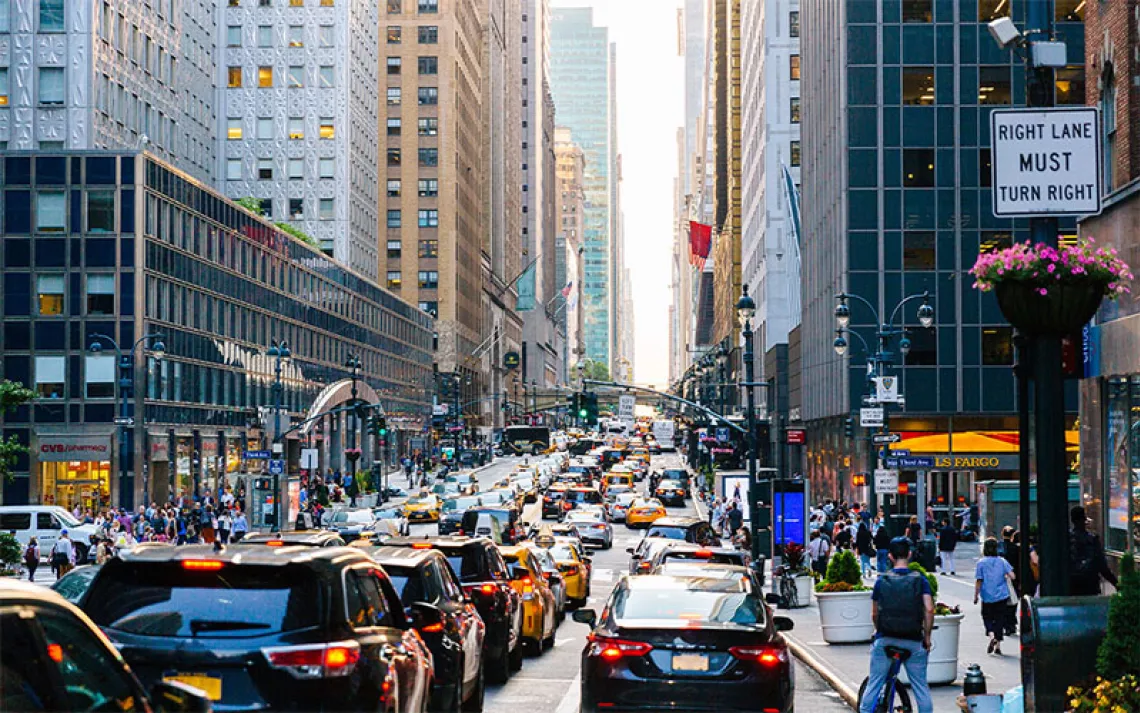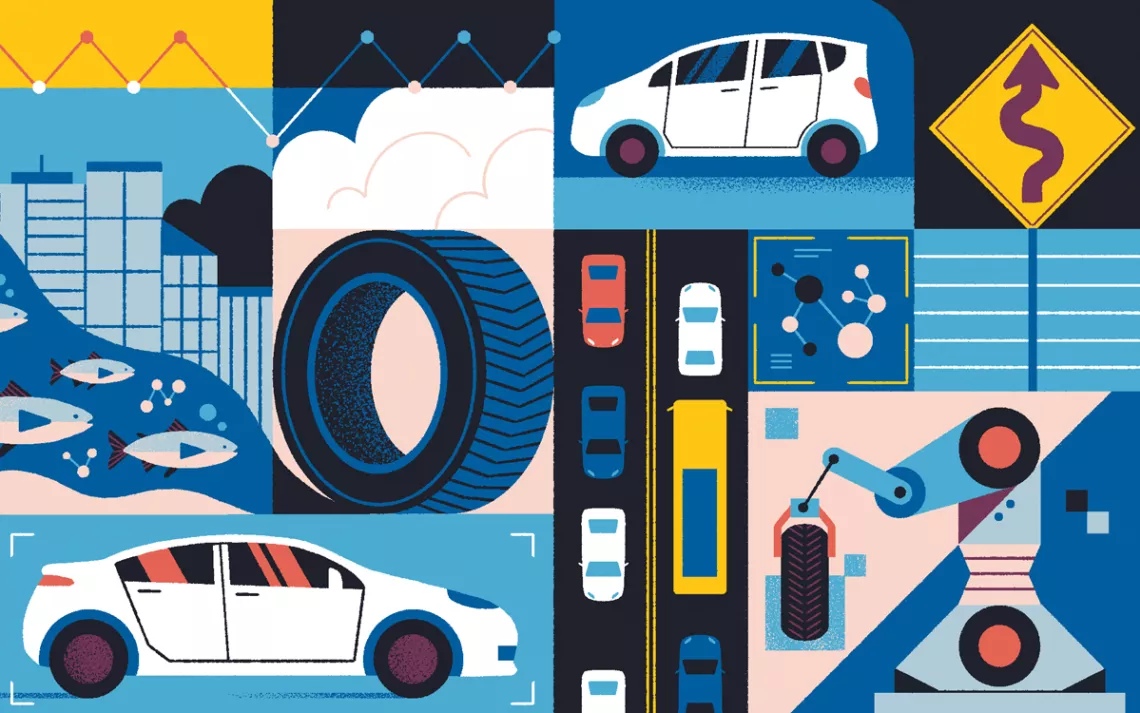The Black Dunes of Detroit
A Downriver childhood

Sunset view of northern Michigan near Sleeping Bear Dunes. | Photo by iStock/Robert Du Bois
I grew up in a rural-industrial stretch along the Detroit River, south of the city and called, without irony, Downriver. It was neither pretentious nor picturesque, and those of us who lived there were called “river rats” by residents of the tonier northern suburbs, if they knew we existed at all.
If you lived Downriver in the 1970s, you could work in the steel mills, or hang onto your family farm and sell fresh eggs to the newly suburbanized housewives, or you could work in the auto industry, for one of the Big Three. My dad was a GM guy. General Motors. Specifically Cadillac, which made us exceedingly lucky by the standards of the day, because he was white-collar and didn’t have to work on the factory floor. Back then, which of the Big Three your dad worked for could determine who your friends were, even who you married. GM, Ford, and Chrysler were like the major Western religions. They determined what kind of discount you got on cars for the rest of your life.
Steel mills and factories lined the river—a historically essential waterway connecting the Great Lakes to the St. Lawrence Seaway. So did giant dusty black hills of some kind of industrial byproduct, soft and powdery. Eventually, most of the moms on our street got cancer, which everyone is always careful to tell you not to say is caused by any one thing in particular because really you don’t know.
Sometimes on hot summer nights, we’d drive to get ice cream and sit on the swings at a park and think about sliding down those black piles like you’d slide down a sand dune. When I think about my mom’s cancer, I always remember how, when my dad painted our wooden picnic table every summer, tiny sparkling flecks of something would adhere to the wet paint overnight, making it look like it was covered in glitter. I thought it was beautiful.
*
Both of my parents grew up in Detroit during the Depression and World War II. My mom’s family bounced around a lot, living with whichever relatives would take them. My dad was the seventh of eight children born to Polish immigrants. In high school, he had hoped to take college-prep classes but, knowing his family couldn’t afford to send him to law school, opted instead for the drafting classes offered in the school’s vocational program. Out of high school, he went to work for a small engineering shop and then got hired into GM after a stint in the army. That’s how it worked in those days: If you showed a propensity for it, you could be a draftsman in the auto industry. This was a big deal for a guy whose father had a seventh-grade education and worked as a janitor.
My mom considered herself lucky because she didn’t have to work. Most moms in our neighborhood in the 1970s didn’t. The ones who did were either divorced or liberated. This was always said knowingly and with a little eyeroll. My mom “kept herself busy,” as they used to say about housewives, by taking ceramics classes. She was in bowling leagues with other moms during the day and with my dad at night. She scrubbed the kitchen floor on her hands and knees with a bucket of ammonia. She took care of her own mother and the other elderly women in her family until they died, and then she took care of their funerals and financials. She fell into a deep depression and landed in a mental hospital when I was 14. And then there was the breast cancer when I was 19. But before all those things that happened but weren’t spoken of, there were playgrounds we didn’t know were toxic alongside black chemical sand dunes.
*
Of course, Michigan has real sand dunes. The Sleeping Bear Dunes on the shores of Lake Michigan in the northern lower peninsula became a national park in 1970 and named the most beautiful place in America by the television program Good Morning America in 2014. They weren’t wrong; turquoise water laps onto a yellow-sand beach that then rises into a smooth plateau a hundred feet high. The scenery is stunning. But, like all tourists who visit and make declarations about a place and then leave, they didn’t tell the whole story.
The Indigenous Ojibwe people arrived in what is now Michigan about 1,500 years ago; changing wind and water patterns created the Sleeping Bear Dunes about 2,000 years ago. An Ojibwe legend imagines the story of the massive mound of sand as a mother bear who fled a raging fire in a forest on the Wisconsin side of Lake Michigan with her two cubs. The mother and cubs swam across Lake Michigan for their survival, the mother urging them to be strong until they reached the other side, where they would start their new life in a new land.
When she came upon the shore, though, she turned to find her cubs nowhere in sight. They had drowned. In her grief, Mother Bear lay down facing the water to wait for them, and the Great Spirit—Gitchee Manitou in the Anishinaabe language—took pity and blanketed her with sand. Later her cubs emerged as the North and South Manitou Islands just off the shore, so that Mother Bear can watch over her cubs forever.
It’s a story of loss and migration, of fleeing from great harm and finding yet more harm when you reach your destination. Of things not turning out the way you need them to.
Sleeping Bear Dunes has been eroding since the mid-20th century due to higher water levels and sweeping winds. Much of the plant cover that helped anchor it for centuries has died off. The dunes are home to two endangered and eight threatened species of birds. If the rate of erosion continues, sped up significantly by climate change and irresponsible tourists, scientists believe the dunes will disappear altogether eventually. The island bear cubs will lose their mother.
*
Somewhere in the house Downriver that my dad lived in until he died this past March, alone since my mom died in 2017, is a photo of me sliding down the Sleeping Bears Dunes as a very young kid. In the early 1970s, I didn’t know anything yet about the Ojibwe, or endangered species, or beach erosion. But I had seen the 1971 TV commercial put out by a group called Keep America Beautiful that featured a man we then called an Indian crying over the litter and pollution around him. Every kid had seen it. We didn’t find out until years later that the “Indian” was an Italian American actor known for playing Indigenous characters, and the Keep America Beautiful organization was just a bunch of corporations that sold the very products whose packaging was littering the place, and who were actively campaigning against environmental legislation. The ad was really selling us black-dust sand dunes, and glitter paint on the picnic table, soft drinks and junk food.
In the Downriver city of Wyandotte, named after the Indigenous Wyandot, or Huron, tribe that originally lived on its land, I played on swings in a park built on the former location of Eureka Iron Works, established in 1853 and known as the site where the first Bessemer steel was manufactured for commercial use. On the other side of a tall fence on one side of the park stood massive smokestacks and more imposing piles of black dust. During Prohibition, Wyandotte was notorious for rum-running between the US and Canada across the Detroit River. Later, with the rise of the auto industry and the migration of Black Americans from the rural South to the industrial North, it was notorious for being a sundown town, like almost every other suburb of Detroit.
We lived in Riverview, which has no direct view of the river because that land was bought up by factories and steel mills and railroads long before its 4.6 square miles were incorporated into a city in 1959 as white flight took hold in Detroit. Even as of the 2010 Census, the city of about 12,000 situated just six miles south of Detroit was still 93 percent white. The land on which Riverview sits hosted important battles in the War of 1812. From 1956 to 1963, an area that is now a public park and soccer field was home to active Nike Ajax missile silos as part of the national nuclear defense system intended to protect the auto and steel industries. Six underground missile silos are still there, filled in with concrete and covered first with ash and slag from the steel mills and then with dirt. The Army Corps of Engineers believes that land may be contaminated, but the way it was filled in makes remediation unlikely.
By the time I was approaching adolescence, in the 1980s, an artificial pond was installed in front of the library, adjacent to the old anti-nuclear-missile site. In winter, we’d ice skate on it, and if the ice seemed solid enough, we’d crawl through the sewer pipe that ran from the pond to the other side of the road. In summer, residents go there to power-walk the paved path around the pond, and kids fish for whatever is living in it.
Riverview had its own municipal dump—now a large and profitable landfill—known throughout Downriver as Mt. Trashmore. The part of the trash hill facing the road was covered with dirt, which made it suitable for sledding in winter. One of my earliest memories is of racing down the hill at night on an old Flexible Flyer with my mother sitting behind me. At some point, she fell off and I saw her tumbling down the hill as I sped past, safely guiding the sled to the bottom even though I was only three or four years old. For the rest of her life, she claimed I had pushed her off, but I don’t remember that being true. I do recall I was wearing a pink snowsuit and that I was exhilarated. From then on, I wanted to go by myself down the hill. In the 1980s, the city tried upgrading Mt. Trashmore into a small ski resort. It didn’t last. The heat given off by the decomposing garbage kept melting the snow.
This year, city leaders are trying to expand the landfill by another 45 acres. Without the expansion, they maintain, the city’s finances will all but collapse. Residents, meanwhile, wonder how much more trash a small town can sustain.
*
How do you reconcile your memories with your reality, the things you know to be true with the things you didn’t know were true? When you find out the magical moments of your childhood were really just adult flimflammery, with consequences that would pop up years later? What’s the real tradeoff when you accept things that are objectively dangerous into your life? Can you say it was worth it when you find out how much you’ve lost? What’s the real cost of a good-paying job? What’s the cost of racism? If you entered all the data into a spreadsheet, would it balance out?
I left, but I didn’t go far. If anything, I got closer to the belly of the beast, landing in Dearborn, hometown of assembly-line genius and anti-Semite Henry Ford and a city whose former longtime mayor Orville Hubbard was called “the Segregationist of the North” by The New York Times.
Not that long ago, the extensive Rouge River system that branches off the Detroit River was so polluted by a century of industrial waste that it would periodically catch fire.That’s changed dramatically in recent years, thanks to a largely volunteer effort to restore the local ecosystem to health, and now we have a resurgence of birds, beavers, and even salmon to the Rouge.
Before he died, my dad and I called each other every day. Sometimes he had a lot to say about the state of the world. Usually the word jackass would come up at least once. But one pattern I noticed was how excited he got talking about the possibilities of science and engineering. “We’re entering a new era!” he’d say when he brought up mRNA technology or battery-powered vehicles, sometimes adding parenthetically, “if those jackasses will let us.”
One day he told me, “You know, my dream is to have an electric car.” His own car was having transmission problems, and he was going back and forth on buying a new one. I gingerly suggested a used Ford Fusion hybrid—I knew that GM’s hybrid EV, the Chevy Volt, sat too low for him to get into and out of at his age and that he preferred a traditional sedan. A few weeks later, he called when I was on my way to work. “I’m going to pick up my new used car later,” he announced. The old lifelong GM man had done it—crossed over to rival Ford and to hybrid technology. Even foregone the company discount. He had believed what he’d been taught: Work hard, don’t ask questions, stay loyal. But there was that quiet, inevitable question of balance. Is it worth it?
Change doesn’t come easy when you’ve been who you are for 88 years. Explaining to me that the car would come with a full tank and that the engine would only turn over to gasoline use when the battery had exhausted and needed to charge. He laughed almost giddily, “At my age, I might never have to buy gas again!” A tick on the balance sheet.
 The Magazine of The Sierra Club
The Magazine of The Sierra Club



